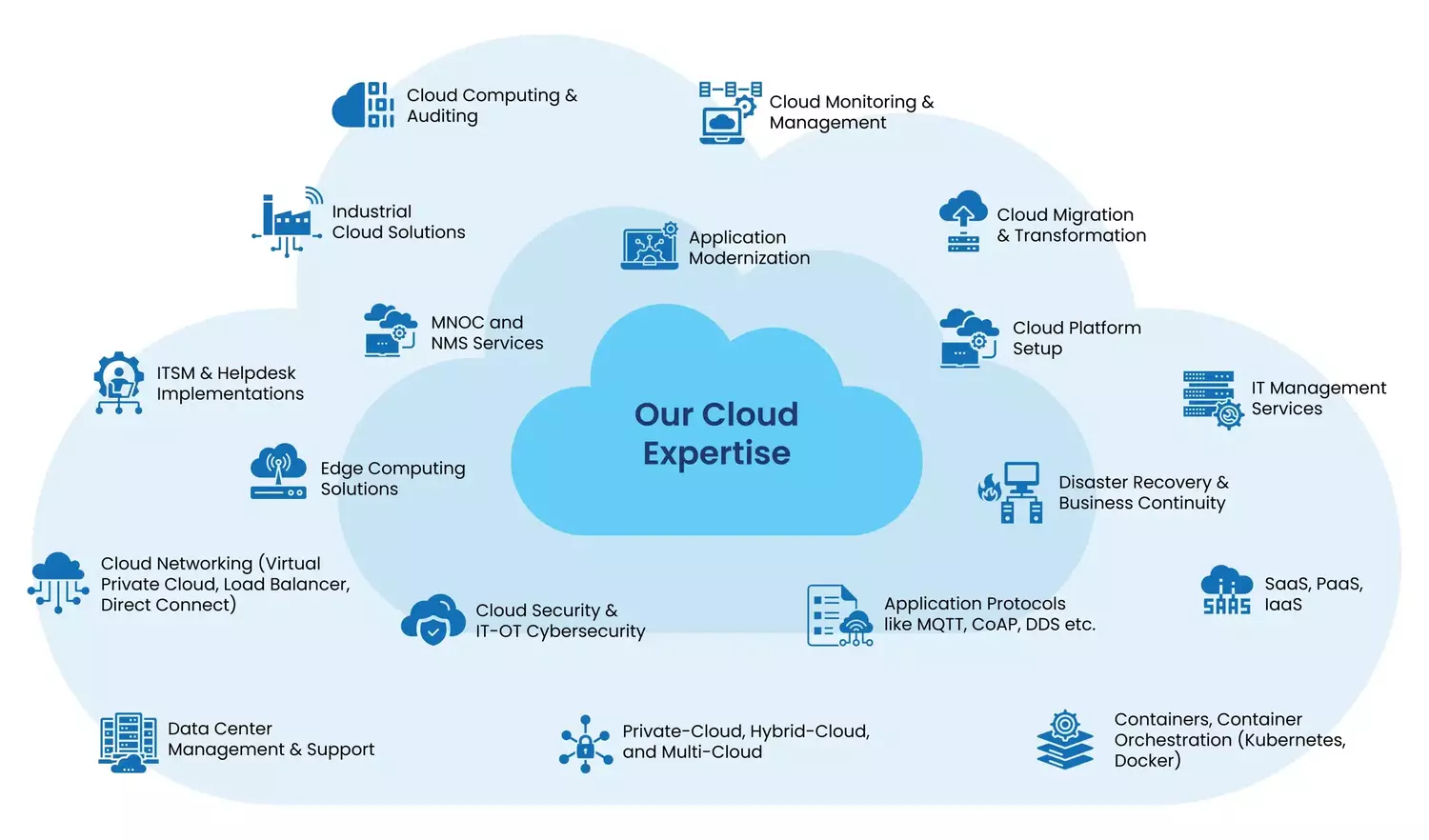Utthunga offers comprehensive cloud transformation services tailored to your organization’s unique needs. Our end-to-end approach streamlines every stage of your cloud journey, from strategic planning and migration to ongoing optimization and management.
Collaborating closely with you, we craft a customized cloud strategy aligned with your business goals. Our experts ensure a smooth migration to your preferred cloud environment, whether public, private, or hybrid.
Beyond migration, we empower you to optimize performance, reduce costs, and enhance scalability. With expertise in hybrid multi-cloud environments, we integrate multiple cloud platforms to meet your specific requirements, ensuring agility and competitive edge.
Partner with Utthunga and experience accelerated time-to-market, enhanced resilience, and unparalleled scalability – all while reducing cloud migration complexities and operational costs.
17+
Years of Industrial Experience
150+
Satisfied Clients
2X
Cost Savings
100+
Certified Cloud Professionals
25%
Faster Transformations
Utthunga’s Cloud Services Portfolio

Our End-to-End Cloud Transformation Services Suite
Consulting Services
- Cloud Transformation Strategy & Design
- IT Modernization Roadmap
- Hybrid Cloud Migration
- Cloud Governance & Assessment Services
- Cloud CoE
- DevSecOps & Agile Transformation
- Industrial Cloud Service
- Data Engineering
- SRE / Observability
- FinOps
- Disaster Recovery & Business Continuity Planning
Hybrid, Multicloud
- Cloud Hosting Services
- Automation across all cloud models & multiple delivery methods (IaaS, PaaS, & SaaS)
- Business Continuity / Disaster Recovery Setup
- DevOps – CI/CD
Cloud Security
- Cloud Security Advisory & Assessment Services
- Zero Trust Solutions
- Managed SOC Services
- Cloud Identity & Access Management
- Compliance & Audit Services
- Security Architecture
- Security Implementation (Cloud Platform, App, Network, Data)
- DevSecOps Integration
Managed Services
Cloud Managed Service
- Cloud Managed Services – 24×7
- Hybrid Cloud Monitoring & Management
- Cloud Capacity, Performance, and Cost Optimization
- Managed DevSecOps and DataOps
- Site Reliability Engineering (SRE)
Managed Cloud Security Services
- Managed Detection and Response (SOC)
- Security & Compliance Management
- IAM (Identity & Access Management) and Governance
- Application Security
App Maintenance and Support
- AI/ML-driven Applications
- Automation
- Proactive Maintenance
- Process Re-engineering
Transformation Services
Application Modernization
- Lift-Shift to Containers
- Monoliths to Microservices
- Intelligent Automation & Pipeline Setup
- Data Modernization
- DataOps Setup
Migrate and Modernize
- Cloud Migration
- Hybrid/Multi-cloud Design and Build
- Infrastructure, Application, and Data Migration
- Infrastructure as Code (IaC)
- Disaster Recovery Setup and Drill
Digital Applications and Platforms
- Web & Mobile Apps, Chatbots, AR/VR
- Cognitive Solutions
- IoT Solutions
- Data Analytics & AI
SaaS/PaaS Platforms
DevOps Services
Continuous Integration and Continuous Deployment (CI/CD)
- CI/CD Pipeline Design and Implementation
- Automated Build and Deployment
- Continuous Testing and Quality Assurance
- Release Management
Infrastructure as Code (IaC)
- Infrastructure Automation
- Configuration Management
- Environment Provisioning
Containerization and Orchestration
- Container Strategy and Implementation (Docker)
- Container Orchestration (Kubernetes)
Monitoring and Logging
- Application Performance Monitoring (APM)
- Infrastructure Monitoring
Security Integration (DevSecOps)
- Security as Code
- Automated Security Testing
- Vulnerability Management
- Compliance and Governance
Our Comprehensive Cloud Transformation Process Framework
Our end-to-end cloud transformation services ensure a smooth and strategic transition, aligning your cloud strategy with your business objectives to drive innovation and competitive advantage.


The Experts Behind Seamless Cloud Transitions


Utthunga’s Cloud Partnerships and Capabilities
AWS

Azure

Google Cloud Platform

Why Choose Utthunga as Your Cloud Transformation Partner?

Proprietary Transformation Framework

Industry-Specific Cloud Services
Our deep domain expertise across industries enable us to craft cloud services that address sector-specific challenges, regulations, and best practices.

Cloud Cost Optimization

Continuous Optimization Commitment

Enterprise-Grade Cloud Partnerships

